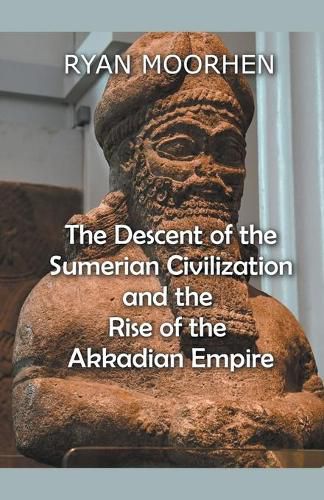Readings Newsletter
Become a Readings Member to make your shopping experience even easier.
Sign in or sign up for free!
You’re not far away from qualifying for FREE standard shipping within Australia
You’ve qualified for FREE standard shipping within Australia
The cart is loading…






This title is printed to order. This book may have been self-published. If so, we cannot guarantee the quality of the content. In the main most books will have gone through the editing process however some may not. We therefore suggest that you be aware of this before ordering this book. If in doubt check either the author or publisher’s details as we are unable to accept any returns unless they are faulty. Please contact us if you have any questions.
Sargon of Agade or Akkad is a name associated primarily with later Mesopotamian tradition, and modern writers view his reign as one of the most crucial periods in the ancient history of his country. As Nabonidus mentions the age of Naram-Sin in his text, the Dynasty of Akkad has become the canon to measure the relative ages of other dynasties of rulers whose inscriptions have been found on various Mesopotamian sites in the past. Despite those historians who have refused to place reliance upon the figures of Nabonidus, Sargon’s position in history has not been diminished by their refusal; and, since tradition associates his name with the establishment of his empire, the terms Pre-Sargonic and Post-Sargonic have been used to describe the earlier and later phases in the history of Sumer and Akkad. The discovery of early inscriptions and tablets attributed to Shar-Gani-Sharri of Akkad removed any tendency to discount the historical value of the later traditions, and identify Shar-Gani-Sharri with Sargon of the Assyrian and Neo-Mesopotamian scribes ceased to be questioned. Sargon of Agade’s historical character is a point in early Mesopotamian history that can be considered solidly established. A recent discovery at Susa has added another dimension to the discussion and opened it up along unfamiliar lines. To explain and reconcile the new data with the old, it will be helpful to briefly mention the steps by which Sargon’s name was recovered and his place in history determined.
$9.00 standard shipping within Australia
FREE standard shipping within Australia for orders over $100.00
Express & International shipping calculated at checkout
This title is printed to order. This book may have been self-published. If so, we cannot guarantee the quality of the content. In the main most books will have gone through the editing process however some may not. We therefore suggest that you be aware of this before ordering this book. If in doubt check either the author or publisher’s details as we are unable to accept any returns unless they are faulty. Please contact us if you have any questions.
Sargon of Agade or Akkad is a name associated primarily with later Mesopotamian tradition, and modern writers view his reign as one of the most crucial periods in the ancient history of his country. As Nabonidus mentions the age of Naram-Sin in his text, the Dynasty of Akkad has become the canon to measure the relative ages of other dynasties of rulers whose inscriptions have been found on various Mesopotamian sites in the past. Despite those historians who have refused to place reliance upon the figures of Nabonidus, Sargon’s position in history has not been diminished by their refusal; and, since tradition associates his name with the establishment of his empire, the terms Pre-Sargonic and Post-Sargonic have been used to describe the earlier and later phases in the history of Sumer and Akkad. The discovery of early inscriptions and tablets attributed to Shar-Gani-Sharri of Akkad removed any tendency to discount the historical value of the later traditions, and identify Shar-Gani-Sharri with Sargon of the Assyrian and Neo-Mesopotamian scribes ceased to be questioned. Sargon of Agade’s historical character is a point in early Mesopotamian history that can be considered solidly established. A recent discovery at Susa has added another dimension to the discussion and opened it up along unfamiliar lines. To explain and reconcile the new data with the old, it will be helpful to briefly mention the steps by which Sargon’s name was recovered and his place in history determined.